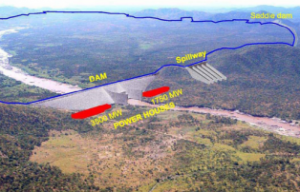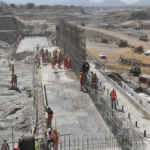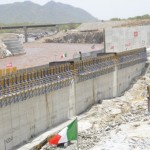 In a strange and surprising twist, Egypt says it will consider participating with its neighbour Ethiopia in the construction of the Renaissance Dam, a project which it had staunchly opposed (and even suggested sabotaging).
In a strange and surprising twist, Egypt says it will consider participating with its neighbour Ethiopia in the construction of the Renaissance Dam, a project which it had staunchly opposed (and even suggested sabotaging).
The dam known formally as the Grand Ethiopian Renaissance Dam will provide much-needed hydro-power to Ethiopia, but downstream it is expected to change the face of the Mighty Nile and the Fertile Crescent as we know it.
According to Al Monitor, Ethiopia’s Prime Minister Hailemariam Desalegn announced that his country welcomes the participation of Egypt and Sudan in the construction of the dam and stressed that his government considers the dam will be jointly owned by Sudan, Ethiopia and Egypt.
Cairo viewed this statement as a positive step toward reaching a consensus on the Nile project, despite its earlier sharp criticism of it.
Egyptian Minister of Water Resources and Irrigation Mohamed Abdul Muttalib said: “Egypt doesn’t mind joining the Ethiopian government in building the dam for the service and development of the Ethiopian people. But we must agree on a number of items in a clear way to prevent any damage to Egypt as a result of the dam construction.
“During the coming negotiations with Ethiopia over the dam, we will clarify our position regarding the policy and method of operating the dam, the size of the storage lake attached to it, and how to fill it with water in times of flood and drought.”
He stressed, “Egypt will definitely not participate in the construction unless these policies are agreed upon and agreements regarding them are signed.”
The Renaissance Dam is an under-construction gravity dam on the Blue Nile River in Ethiopia. It is located in the Benishangul-Gumuz Region of Ethiopia, about 40 km (or 25 mi) east of the border with Sudan.
Currently Egypt gets about 55 million cubic meters of water from the Nile each year through agreements it had signed with Sudan and Ethiopia in 1959. But times have changed, populations have grown and the power needs of the region have outpaced their desire to maintain old contracts.
The majority of the Nile water that Egypt receives comes through Ethiopia, a people who are clearly passionate about how they want to govern their future.
Safety concerns of the future dam, which will generate 6,000 MW, have been brought up; lasting effects to the people who sustain themselves with the Nile are an obvious concern especially for Egyptians.
Meanwhile the media speculate that this move by Egypt is less goodwill than playing its cards while the political turmoils that have taken over the country simmer down.
While dams are a straightforward and somewhat “green” source of hydro-power, there are lessons to be learned from countries that construct them. Thailand, China, Canada, the United States have all constructed major hydro-electric dam projects which have resulted in massive changes to the natural and built environment.
For a country like Egypt which seems to be hanging precipitously by a thread, a change to its precious Nile could spell out disaster.
There is a wonderful historical and academic article here on Origins if you want to delve deeper into the significance of the Nile to countries like Egypt and Sudan.
According to Origins, “Since the twelfth century C.E. Christian Ethiopian kings have warned Muslim Egyptian sultans of their power to divert waters of the Nile, often in response to religious conflicts. But these were hypothetical threats.
“Today, however, Ethiopia is building the Grand Renaissance Dam and, with it, Ethiopia will physically control the Blue Nile Gorge—the primary source of most of the Nile waters.”
Any changes to the Nile will force world powers in the region to adjust. This Green Prophet would rather see Ethiopia (defiant about its dam) develop solar power than to make sweeping changes to the ebb and flow of the mighty Nile.
When completed, the Renaissance Dam – formerly known as the Millennium Dam and sometimes referred to as Hidase Dam – will be the largest hydro electric power plant in Africa.
Egyptian, Sudanese and Ethiopian ministers will soon meet to discuss the dam, hopefully under civil terms.
According to Wikipedia Egyptian tactics weren’t so diplomatic in the recent past: “On 3 June 2013 while discussing the International Panel of Experts report with President Mohammad Morsi, Egyptian political leaders suggested methods to destroy the dam, including support for anti-government rebels.”
The speakers didn’t realize they were being televised live. Oops.
by Karin Kloosterman















![Ethiopia will push forward with construction of the Dam but could be forced to slow the pace [The Economist Intelligence Unit]](https://www.ethiopianopinion.com/wp-content/uploads/2013/10/egypt21-150x150.gif)












Join Conversations